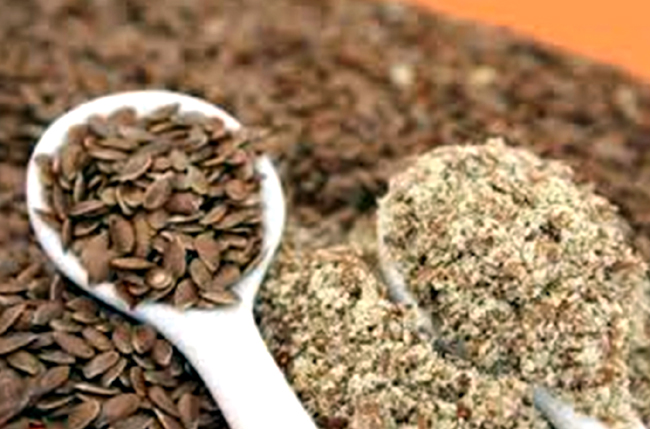Dr Juhi Gulati Amla
Flaxseeds (also called linseeds) are a rich source of micronutrients, dietary fiber, manganese, vitamin B1, and the essential fatty acid alpha-linolenic acid, also known as ALA or omega-3. The seeds come from flax, one of the oldest fiber crops in the world – known to have been cultivated in ancient Egypt and China. It is not only a source of healthy fat, antioxidants, and fiber; modern research has found evidence to suggest that flaxseed can also help lower the risk of diabetes, cancer, and heart disease.
Nutritional profile for Flaxseed
There are two main types of flaxseed: golden flaxseed and brown flaxseed. Their nutritional profiles are very similar and both contain the same number of short-chain omega-3 fatty acids. The American Nutrition Association highlighted the importance of this “neglected food”, stating that flaxseed is not only “an excellent source of two fatty acids that are essential for human health – linoleic acid and alpha-linolenic acid,” but also “an excellent source of fiber and a good source of minerals and vitamins.”Flaxseed is very low in Cholesterol and Sodium
Flaxseeds are rich in:
* Lignans – They are estrogens-like chemical compounds with antioxidant qualities, able to scavenge free radicals in the body.
* Fiber – flaxseed is rich in both soluble fiber (which dissolves in water) and insoluble fiber (which does not dissolve in water).
* Omega-3 fatty acids – these are considered to be “good fats” that are beneficial for the heart. These essential acids are only obtainable by eating the right foods.
Health benefits of Flaxseed
The therapeutic and beneficial properties of consuming flaxseed are not yet completely understood, and many claims still lack “high-quality” studies to back them up.
Cardiovascular Disease
Eating flaxseed daily may also help your cholesterol levels. The level of LDL or “bad” cholesterol in the bloodstream has been linked to an increased risk of heart disease, obesity, diabetes, and metabolic syndrome.
Inflammation
Two components in flaxseed, ALA and lignans, may reduce the inflammation that accompanies certain illnesses, Reducing inflammation associated with plaque buildup in the arteries may be another way flaxseed helps prevent heart attack and strokes.
Cancer
Recent studies have suggested that flaxseed may have a protective effect against breast cancer, prostate cancer, and colon cancer. The lignans in flaxseed may provide some protection against cancers that are sensitive to hormones without interfering with the breast cancer drug tamoxifen. Lignans may help protect against cancer by blocking enzymes that are involved in hormone metabolism and interfering with the growth and spread of tumor cells.
Tips for Using Flaxseed
* Buy it ground or grind it yourself. Flaxseed, when eaten whole, is more likely to pass through the intestinal tract undigested, which means your body doesn’t get all the healthful components. If you want to grind flaxseed yourself, those little electric coffee grinders seem to work best.
* Buy either brown or golden flaxseed. Golden flaxseed is easier on the eyes, but brown flaxseed is easier to find in most supermarkets. There is very little difference nutritionally between the two, so the choice is up to you.
* Add flaxseed to a food you habitually eat. Every time you have a certain food, like oatmeal, smoothies, soup, or yogurt, stir in a couple tablespoons of ground flaxseed. Soon it will be a habit and you won’t have to think about it, you’ll just do it.
* Keep it in the freezer. The best place to store ground flaxseed is the freezer. Freeze pre-ground flaxseed in the bag you bought it in or in a plastic sealable bag if you ground it yourself. The freezer will keep the ground flax from oxidizing and losing its nutritional potency.
* Whole flaxseed keeps longer. The outside shell in whole flaxseed appears to keep the fatty acids inside well protected. It’s a good idea to keep your whole flaxseed in a dark, cool place until you grind it. But as long as it is dry and of good quality, whole flaxseed can be stored at room temperature for up to a year.
(The author is Consultant Dietitian/Nutritionist)
Trending Now
E-Paper


